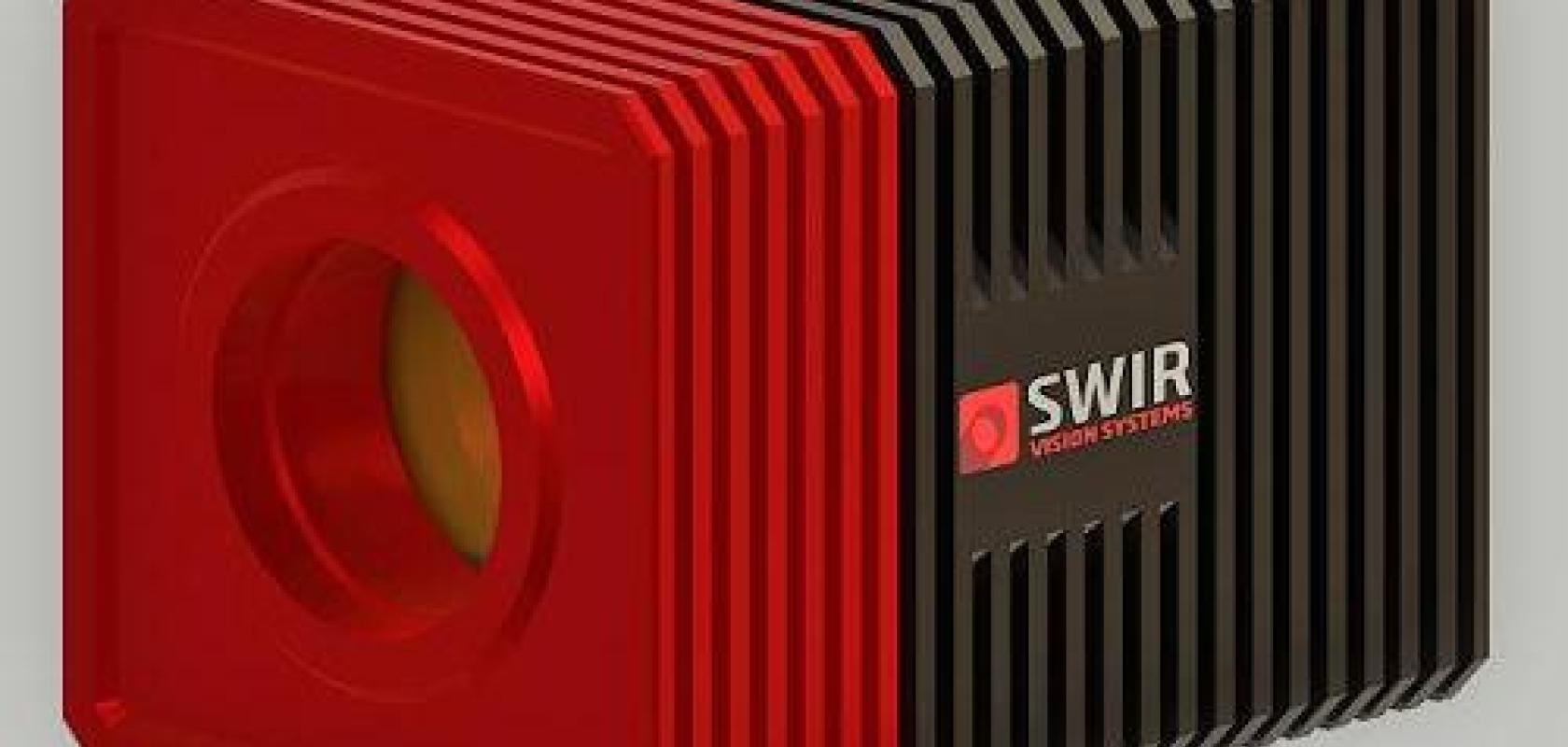The first shortwave infrared camera built on quantum dot sensor technology has been launched by US firm SWIR Vision Systems.
The company says the camera will compete directly with InGaAs SWIR cameras by delivering higher resolution, lower cost, and global exportability to the vision industry.
The Acuros SWIR camera has HD resolution of 1,920 x 1,080 pixels (2.1 megapixels). It uses a 400nm to 1,700nm broadband image sensor with colloidal quantum dot (CQD) thin film photodiodes fabricated monolithically on silicon readout wafers. The quantum dots are layered directly onto CMOS readout integrated circuits using well-established semiconductor deposition techniques, which keep costs down.
The technology was shortlisted for a Vision Award at last year’s Vision show in Stuttgart.
Colloidal quantum dot sensors have lower quantum efficiency than InGaAs sensors. However, when paired with relatively inexpensive active illumination, the camera can give near-InGaAs equivalent performance with a reduction in overall system cost, according to SWIR Vision Systems.
Acuros cameras feature: InGaAs-equivalent noise, pixel operability greater than 99 per cent, 15µm pixel pitch, and can image at speeds up to 380fps via GenICam-compliant GigE Vision and USB3 Vision interfaces.
George Wildeman, CEO of SWIR Vision Systems, said: ‘Our intent is to drive down the cost per megapixel in SWIR imaging, disrupting the cost and performance curve for vision systems designers.’
The company will exhibit its cameras at the Automate trade fair in Chicago from 8 to 11 April, demonstrating the camera’s utility and value for silicon inspection, machine vision, surveillance and security systems, hyperspectral imaging, and other core SWIR applications.
Further reading: Dr Ethan Klem, Allan Hilton, and George Wildeman from SWIR Vision Systems discuss the performance, fabrication, and cost trade-offs of CQD sensors versus InGaAs


